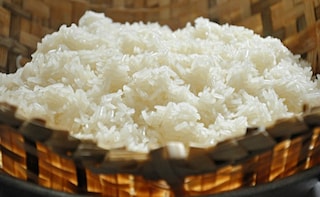Someone I love called me a rice eater. I took that with a pinch of salt. Rice is such a versatile ingredient that it's hard to find any other grain as unique as rice. And harder still is not to be obsessed with this wonder grain. Particularly, for Northeast India, rice is not just a staple diet but an integral part of every community's culinary idiom.
Zhyero in SikkimAgain, zhyero is made of rice flour which is first finely powdered. It is like entangled thin strings or wires and specific to the Bhutia community of Sikkim. There will never be a Bhutia home without a stock or reserve of zhyero, as it would mean incompetency of the lady of the house.
Nothing beats Sikkimese Zhyero with tea(Also read: The Miraculous Power of Papaya Flower)Sel-roti is another rice-based savoury exclusively from the Nepalese kitchen in Sikkim. It is sweetened rice bread that looks like uneven doughnuts. It is made of rice which is powered and then soaked with different condiments including sugar to make a batter. The consistency of the batter makes all the difference and the preparation is somewhat similar to preparing jalebis as it needs a swift hand to ensure the batter takes shape. When there are heaps of sel-roti in their homes, know it's to herald a festival.
Advertisement
Advertisement
Advertisement
Zhyero in SikkimAgain, zhyero is made of rice flour which is first finely powdered. It is like entangled thin strings or wires and specific to the Bhutia community of Sikkim. There will never be a Bhutia home without a stock or reserve of zhyero, as it would mean incompetency of the lady of the house.
Nothing beats Sikkimese Zhyero with tea(Also read: The Miraculous Power of Papaya Flower)
Advertisement
For the latest food news, health tips and recipes, like us on Facebook or follow us on Twitter and YouTube.
Advertisement
Tags:
